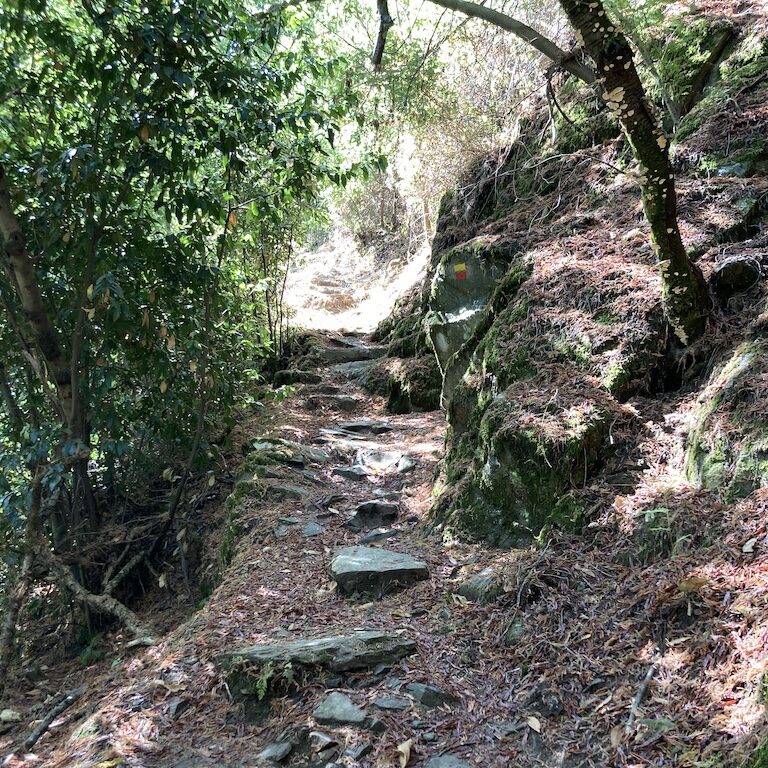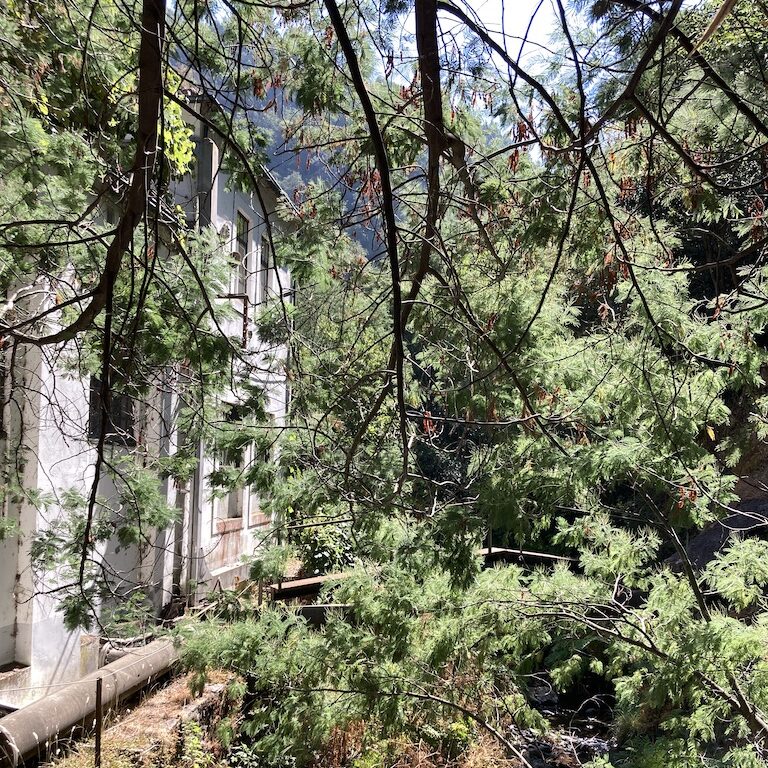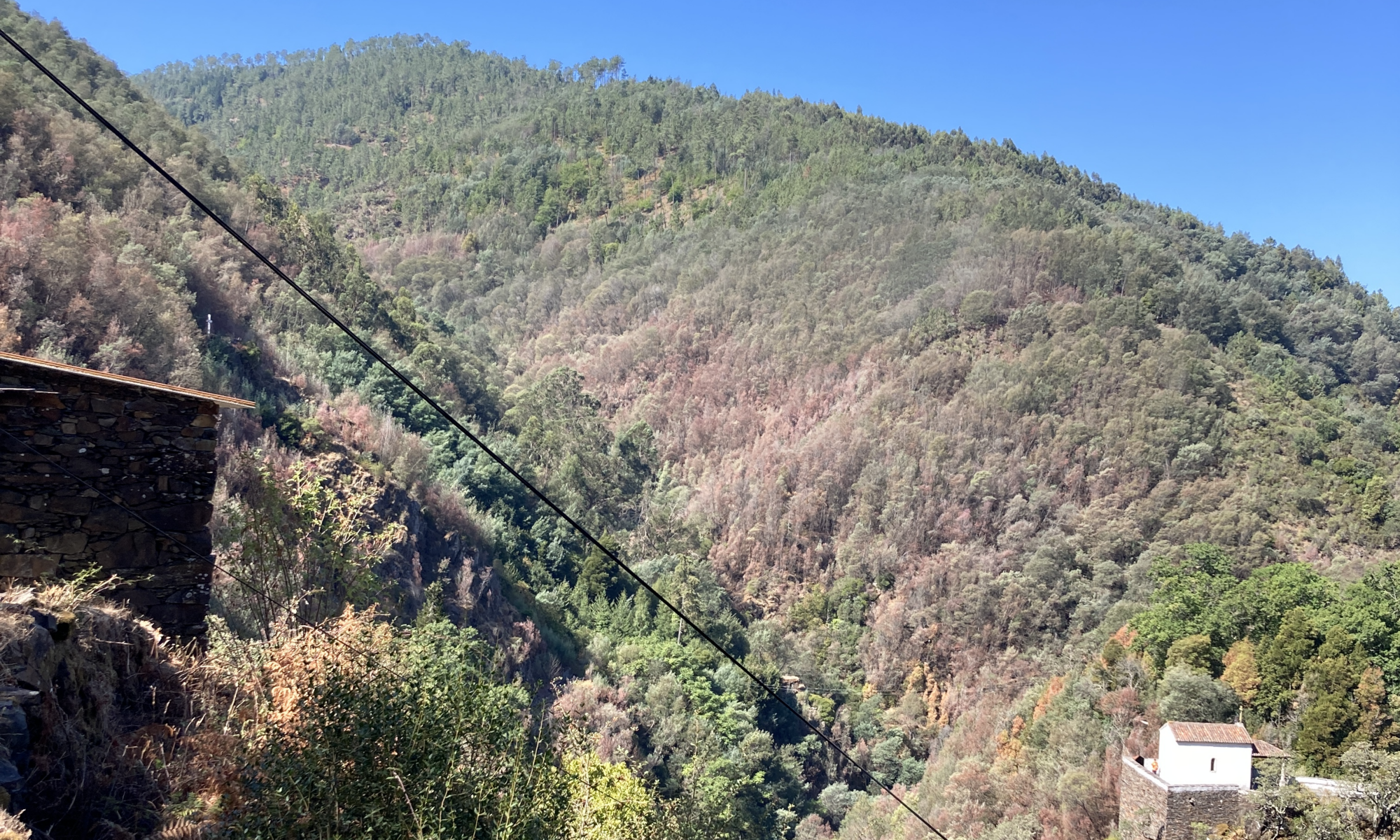Last summer, I set out for a hike in the Lousã mountain range. I’m usually comfortable hitting the trails alone. I have some experience in mountaineering, and this route seemed easy enough. Something that would take about two hours.
At the start, the trail offered a wide, well-defined path, with shade and coolness. It was ten minutes in this setting until I reached the river. From here, the ascent began. Nothing special. Then a bit steeper. Manageable. Even steeper. An hour later, I had to use three points of contact (two feet and a hand) to climb. There were high rocks and imposing boulders. “If the route is classified as medium difficulty, this climb must end soon,” I thought. And it did. An hour and a half later, it gave way to a steep descent on gravel that made me slip with every step. Half an hour sliding down the slope. It came to an end. Another ascent. This time on beaten earth but quite steep. Another hour. I was already two hours in, and another half when I finally reached the schist village. Beautiful. Magical. In ruins.
I stopped for a moment to drink water then continued while nibbling on a cookie. Maybe I got distracted with the cookie, with the village, or with my thoughts. When I recovered my awareness, there were no signs of the trail anymore. I wasn’t inattentive for long, but given my nonexistent sense of direction, it was enough to get lost.
I had three options:
- Venture onto another path nearby, risking getting even more lost in the mountains.
- Follow the asphalt road, knowing I had 18 kilometers of walking towards where I had left the car.
- Go back on the trail I had taken, knowing the difficulties I had already encountered on the way there.
A journey that would end in half an hour now seemed much longer.
In the paths I’ve traveled through the mountains of the world, I’ve always had difficulty dealing with the ascents. I look at them and think I’m not capable, my legs will give out, I’ll run out of breath. I suffer in anticipation. It’s a kind of vertigo but in the opposite direction.
What made me choose to go back the same way was the fact that I had spent so much time climbing. Now it would be almost all downhill, it would be faster. The ascents that would turn into descents shouldn’t be that complicated. After all, I had managed to do them.
Three challenges: Some fatigue, scorching sun, and lack of water.
I moved forward. Standing there certainly wouldn’t take me back to the start.
In these steps back, I realized that the climb I had undertaken was indeed difficult and time-consuming. This made the descent itself a challenge. I was amazed that I had managed to do it and almost rejoiced in the way destiny had found to show me the real extent of my physical capabilities.



Facing the adversity of the mountain is like realizing a dream or pursuing a passion. If not, let’s see:
1. For better or worse we are on our chosen path
Our dreams, just like paths, happen because we decided to take the first step. Whether it’s to connect with nature and landscapes that are only accessible through footpaths or to chase a purpose, it’s necessary to decide that we want to do it. And then, we act accordingly.
2. Even with the inherent adversities, the result is rewarding
The realization of a dream can fail. But the greatest frustration comes when it was never attempted. Just like a hike. There are places and landscapes that I would never have known if I had never penetrated the heart of some mountains through paths where only my hiking boots fit, one at a time. The villages, the streams, and the trees I saw, the sounds and smells of the mountain, I would hardly have experienced them if I had chosen not to leave the comfort of the car on the asphalt road.
3. Small goals add up to big results
When we start our journey, whether it’s the pursuit of a dream or winding trails in a mountain, it’s essential to set small goals that we celebrate as great victories. Sometimes the distance we need to travel to reach our destination can be long. That fact can be quite demotivating. On my way back, tired, without water, and with the sun burning, I kept thinking: just get to the top of that hill and rest, if I can get past that curve, then the path to the ruins is easier, or at the end of this descent, there’s the river, I can refresh myself.
4. Focus on the present moment.
On my journey back, there was a moment when I found myself slipping and losing balance. I slowed down and thought that risking twisting an ankle couldn’t be an option. So I paid more attention to my step, slowing down the pace and making sure I placed my feet on firm ground. I abandoned the anxiety and urgency to arrive. Sometimes, when we decide to follow the path of a dream, we let our minds dwell on a future where the path has already been traveled. The future is something that doesn’t exist yet. If we divert our attention from what we’re living in the present, we run the risk that it will never come to exist.
5. Silence the treacherous voices.
It’s important to recognize when our internal voices are just trying to sabotage us. Often these voices are only our unfounded fears. At one point on my journey, at the beginning of a steep, shadeless ascent, voices in my head kept repeating: “You’re not fit for this. You’re exhausted. You have no water. The sun that’s out will accelerate dehydration. Stop!” These voices are ourselves. As such, we have the power to control them. We have authority over them. That’s how I decided to put an end and tell them to shut up.
6. Celebrate each victory, big or small.
We become aware of our real value. Risking leaving our comfort zone to pursue a dream is a great achievement. Excessive modesty, undervaluing our true abilities, betray us as much as exaggerated presumption. We must enjoy the moment to the fullest, be honest with ourselves. In this experience, I had the opportunity to realize that my physical abilities and determination were much stronger than I thought. Furthermore, by making the return journey, destiny showed me that I have much more potential to tackle steep ascents than I had ever thought. Looking back now, it seems to me that it wasn’t even as much of an effort as I almost convinced myself it was at the time.
Traveling the world consciously and sustainably and sharing my experience, either through writing or with anyone who wishes to travel with me, is what I do and what makes me happy. The path I have taken to get where I am is very similar to my experience in the Lousã mountains last summer. The methods learned through experience in hiking, mindfulness, and writing have been good tools in this epic journey. After all, everything in life is connected.

